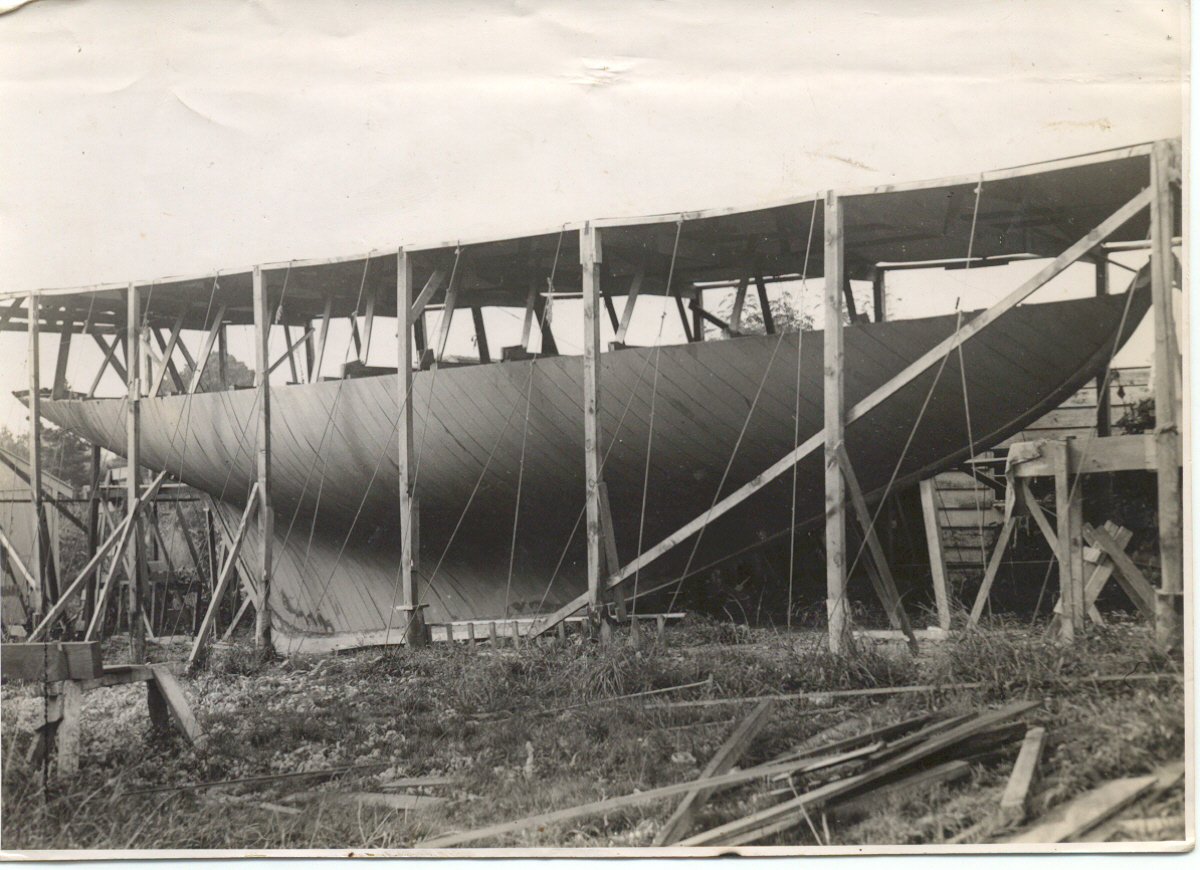The next basic step is getting the planking on the boat. The big trick here is getting a very long piece of wood to wrap around a curved object and have the ends land where you want them. Additionally it needs to be fit tightly to the plank next to it. Since Leda is double-planked it had to be done twice.
With the first layer laid diagonally. I’ve not done any diagonal planking but I’m sure it’s only marginally easier, if at all. I believe that some of Leda’s diagonal planks were steamed to aid in getting them into the reverse curve.

The good news is that the interior diagonal planks don’t get caulking between them. Typically the planks are shaped so that their edges meet tightly but the outer part of that join has a bevel to leave a gap that is packed tightly with cotton. The cotton is twisted into a large, loose yarn and then packed into the seam with a caulking iron and a mallet. It tightens everything up and provides a water tight seam. Leda’s outer, fore and aft planking got this treatment, but the interior is just spaced closely together.
Leda’s interior planking is 1/2″ thick by perhaps 4-inches in width. Her exterior planking is 1″ thick and perhaps nearly 4-inches in width at her mid-section. It tapers toward her ends and varies in width according to which part of the hull it was fitted.

The longitudinal planking is mostly full length. I’m still not sure what it might have been like fitting it. In Sandy Wilson’s words, “it was a long, weary, painstaking job” and, “each plank, and there were more than 60 of them between 25 and 50 feet long, had to be accurately planed on both edges, slightly hollowed on the inside to fit the curve of the hull and slightly beveled on the top edge so that the caulking cotton could later be hammered in”.

The planking was then riveted using copper rivets and roves. Holes were bored to place the rivets so that the planks were fastened on each edge through the frames and both sets of planking was riveted together between frames. There are boats built with clenched nails. The nail is pushed through the bored hull and bent over. But roves are dome shaped washers that are pushed over the end of the nail (rivet) before the end of the rivet is cut off and peened. Copper rivets are labor intensive but in my opinion the superior solution to fastening a wooden boat.
Double planking offers a very rigid structure but it also allows a space between planking where water might be trapped. For this reason the planks need to fit well and be pulled tightly together. It is common to put something between the layers of planks. Something along the lines of Irish felt. Traditional Irish felt is made from flax and looks not unlike felted wool. It is impregnated with asphalt so it looks somewhat like tar paper. It fills that space. Regardless, this was not used on Leda. Instead everything was treated with red lead. Red lead is paint made from lead oxide and is bright orange or a burnt red in color. It is poisonous and thus does not allow rot and fungus to grow. As I’ve said elsewhere, there are lots of poisons used on wooden boats. Despite the decision to not use felt between the planks there is no indication all these years later that it has been any kind of an issue. I’ve had arguments with people over whether or not it is necessary. When we get to my part of this story, look for the story about Panther Piss. I can tell you that I am grateful that it was done as it was. There is dust in the bilge to prove it works. But the boys must have done a superior job of fitting everything up as that is one thing the felt will allow for is some error in fitting. Not a lot, but some.
Next: Cap It Off
Previous: I’ve Been Framed!